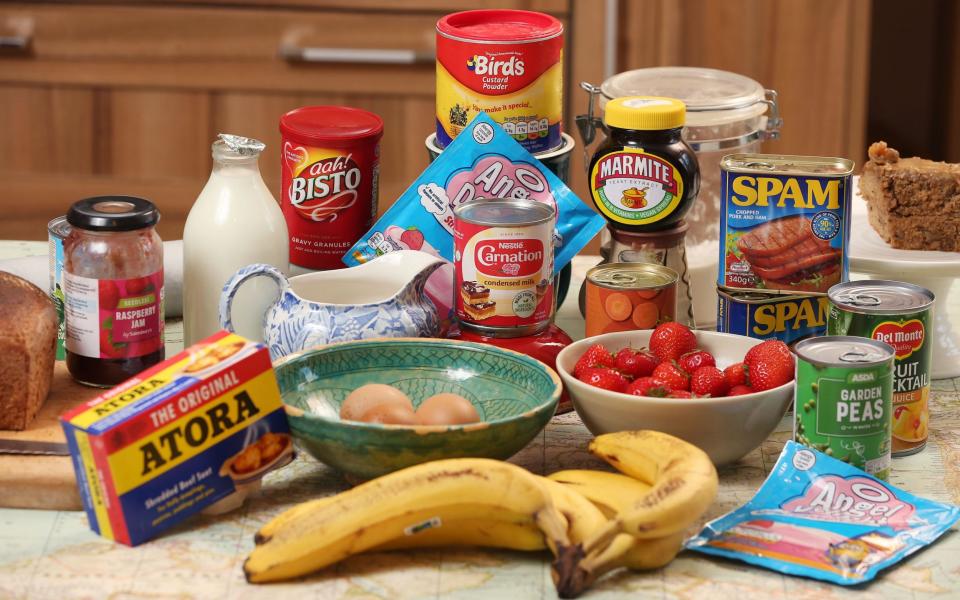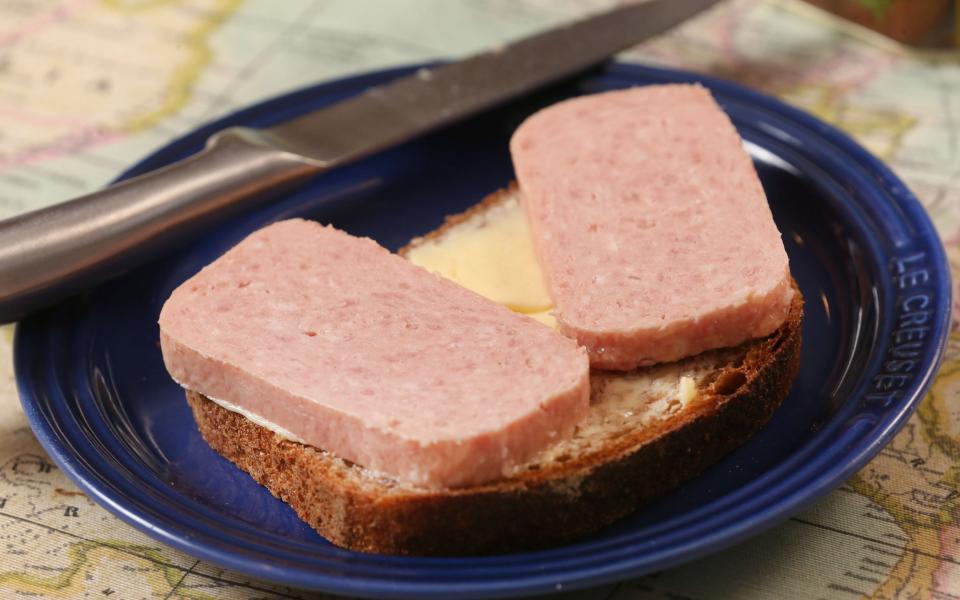It’s one of the warmest days of the year so far, but my oven is on and blowing. Inside is a joint of beef and a tray of roast potatoes sizzling in beef fat. My Yorkshire pudding is ready to go; on the hob is a pan of rice pudding simmering, along with a couple of tins of peas and carrots, ready to be reheated.
It’s a bit countercultural, given the rising temperatures, but so has my last week been. I’ve just spent seven days eating like I’m in the 60s – roast beef, canned veg and all – in an attempt to see what the health benefits might be. And while there are some things I definitely won’t be doing in my 21st century life (a lack of fresh veg and toast at almost every meal), there are other habits I definitely will be keeping.
They were clearly doing something right. In the 1960s, only 1 percent of men and 2 percent of women in England were classified as obese, compared to 25.2 percent of men and 26 percent of women today.
In the late 1950s, the average male weighed just over 65 kg and the average female 55 kg. In 2021, the average male and female weighed 85.1 kg and 71.8 kg, respectively.

Although there was still a significant gap between rich and poor households, the 1960s, as the social historian Professor John Burnett noted in his influential work Abundance and Dearth: A Social History of Food in England from 1815 to the Present, the ‘prosperous years’ – post-war rationing was a distant memory and the recession of the 1970s had yet to hit.
On the whole, the majority of working people ate reasonably well: Britons in the 1960s drank more milk per week – an average of 4.84 pints per person – spread more butter on their toast, ate more eggs, consumed considerably more sugar and ate more meat than their counterparts in 1950 or 1974. Their consumption of fresh fruit and green vegetables was also higher, although they ate less fresh vegetables overall. This was, after all, the dawn of ready meals and the age of the can.
Meat and two vegetable and family meals
As a middle-class, working-class family, with my husband going to work every day and me staying home to take care of the house, my family ate three main meals a day: breakfast, lunch, and dinner, plus a light snack at 11 a.m. and again at 4 p.m. Some households also ate “dinner” before bed — again, a light snack in the evening. “Snacking didn’t happen in the way it does now, but you could legitimately snack mid-morning, especially as a woman in the ’60s,” says food historian Dr. Annie Gray, author of The cookbook ‘Call the midwife’which revolves around recipes from the 60s. For my husband at the office, this is still the era when the tea trolley came by twice a day.


Perhaps the biggest difference between then and now was, firstly, the types of foods people ate, and secondly, how much of them. While sugar consumption was much higher then than it is now (an average of 17.76 oz, or 503 g, per week per person, compared to the 1.8 kg consumed per person per year now), processed foods were few and far between. Tinned goods, yes, UPFs, definitely not. And while this was the decade that saw the rise of breakfast cereals (Coco Pops launched in 1961 and Ready Brek in 1957), more adventurous crunchy flavours to please the palate (Golden Wonder launched Ready Salted in 1960 and Cheese & Onion in 1962) and the invention of Angel Delight in 1967, the reality is that these were occasionally exotic treats.
Today, we get a whopping 57 percent of our calories from ultra-processed foods, compared to negligible amounts in the 1960s.
Bread and butter, potatoes and suet pudding
Most food was fairly simple, with meat and two kinds of vegetable, and was cooked from scratch. Starchy carbohydrates – potatoes, bread, suet – which were cheaply filling, were a staple of every menu; meats were usually rare (chicken was an expensive luxury) or processed (sausages, ham and Spam) and leftovers were not called that, they were simply the next meal; not least because few British households, especially in the early 1960s, had refrigerators.


Even in 1968, only 50 per cent of households had one. Vegetables came in tins or were whatever you could grow yourself or get from the greengrocer: peas, carrots, cabbage, courgettes (not courgettes). “Broccoli wasn’t invented,” my 77-year-old father said. There was always pudding – usually of the something-and-custard variety – but that came at the end of a main meal; my mother remembers being allowed to have plain cake at teatime on weekdays, but only after a slice of bread and butter.
Portion sizes were smaller, however; the average plate size was 9 inches and bowls were a modest 7 inches in diameter. In contrast, the average size of many of our foods has grown by a whopping 138 percent, according to data from the American Journal of Public Healththe news Power supply and the Journal of the American Medical Association. A portion of meat would have been about 100 grams, and the lion’s share would have gone to the man of the house, leaving a woman like me with even less – my 1.5 kilo piece of beef provided our family of four with three meals.
And people were much less sedentary back then: as a housewife, I spent most of my day standing up, shopping, cooking or cleaning, and I walked or took the bus instead of driving. In 1967, more than three-quarters (77 per cent) of adults said they walked for at least half an hour every day, compared with just 42 per cent in 2010.
What Happened When I Tried a Diet from the 60s?
My week of eating in the 60s had its ups and downs. I started on Sunday with a cooked breakfast, albeit a modest one: a rasher of bacon, a piece of fried bread (fried in beef fat) and a cup of tea. The main event was of course the Sunday roast at lunchtime, and despite my relatively modest portion I was far too full to eat more than a few slices of bread and jam for dinner, which would have been quite normal in the 60s.


Monday was leftovers day: a couple of roast potatoes, some vegetables and gravy, plus a slice of bread and butter for lunch; cold roast beef and roast potatoes with salad for dinner, supplemented by a tin of peaches and chopped banana with condensed milk for dessert; on Tuesday I made a sort of pot beef with the leftover beef for my sandwiches.
Although in the 1960s I would probably have cooked the main meal at lunchtime when my husband and children got home, this meant that during my exam week I switched things up: breakfast was toast with a boiled egg or butter and Marmite most days. Lunch was whatever was left over from the night before, perhaps with a piece of bread and butter to round it out. Dinner, which we ate together around 6pm, was the main event; whether that was spaghetti hoops on toast (Heinz was popular in the 1960s) with jam roly poly and custard for dessert; potato and onion pie followed by rice pudding or toad in the hole with leftover tins of peas and some tinned fruit cocktail and custard for dessert.


There were a few treats: a (modestly sized) coffee and walnut cake for my dad’s birthday (made to a 1960s recipe, but without the Camp Coffee flavour, which I had to improvise with Nescafé for) and fish and chips on Friday, which would have been customary in most households, but gone were the mid-morning coffee shop latte and glass of wine with dinner.
The experience surprised me at first. I don’t usually eat breakfast that often, but I found that with some toast or an egg I was less hungry at lunch and satisfied with my smaller portion. I never expected that three cold roast potatoes and a handful of tinned peas doused with Bisto would be a satisfying lunch.
I also noticed that I was less hungry in the afternoon. By early evening I was ready for my evening meal, but I wasn’t hungry – and even on a ‘savoury’ day I was perfectly happy with just one sausage and a small portion of mash (I got out a suitably sized vintage plate to keep my portion sizes reasonable) – and pudding at the end always rounded it off nicely. The scales even seemed to show that I had lost a pound or two, which seemed extraordinary considering the amount of carbs I had consumed.


By day five, however, I hit a wall: I found myself becoming increasingly sluggish in the mornings, with terrible breath, and I was craving salad and lean protein. “My biggest criticism of the diet is the lack of fresh fruits and vegetables, which are so important for good nutrition and gut health,” says The Telegraphnutritionist Sam Rice, who took a closer look at my menu for the week.
“There is very little variety in the plant diet and it doesn’t come close to the modern recommendation of eating 30 different plant foods a week. There are also very few complex carbohydrates, again from fruits and vegetables, as well as whole grains, beans, lentils, nuts and seeds.” Rice also points to a lack of omega-3 from oily fish and that most of the fat I eat is saturated animal fat rather than the healthier monounsaturated fats found in olive oil, avocado and nuts.
By the end of the week I would definitely be glad to never see another sandwich with soggy bread, and I am sick of the jam. The weight I thought I had lost has also returned, minus a little bit.
But there are a few things I’ll take with me. Smaller portions to start with – I’ll stick with my 1960s plate. Nescafé with milk from a carton is a great (and much cheaper) alternative to a calorie-laden latte for everyday use, and a glass of wine is better as an occasional treat (I’m not switching to sherry). My kids would also be happy to continue the daily pudding ritual.
But I am very happy that I have a refrigerator, and access to a wide variety of fresh fruits and vegetables. And Spam will never find a place in my kitchen cupboard.